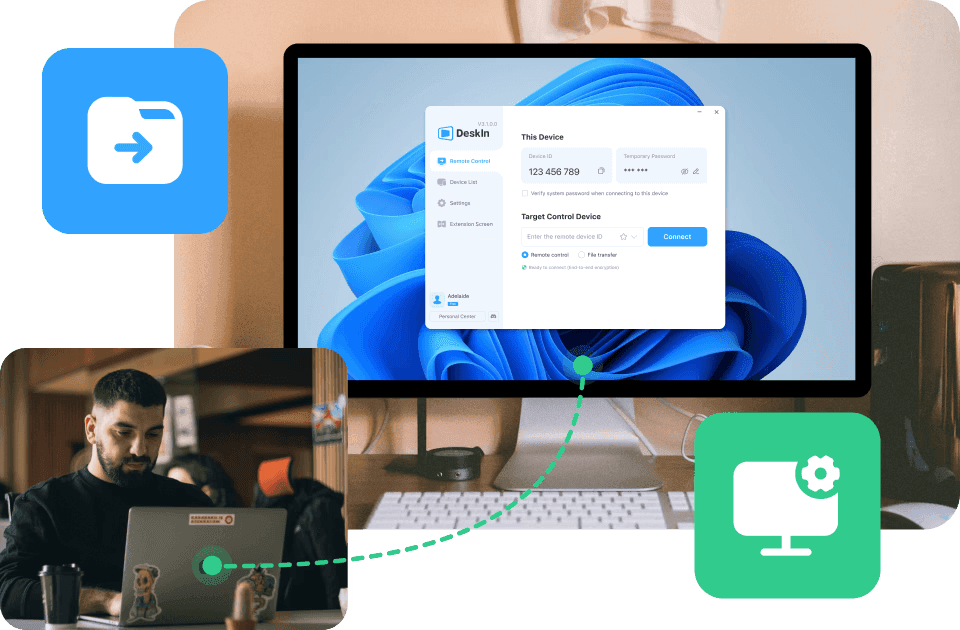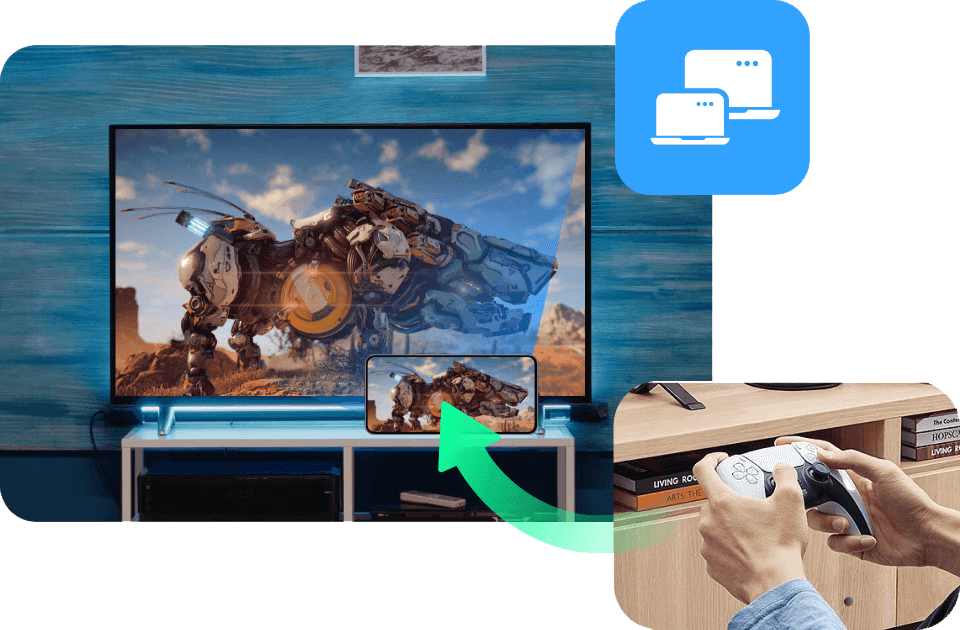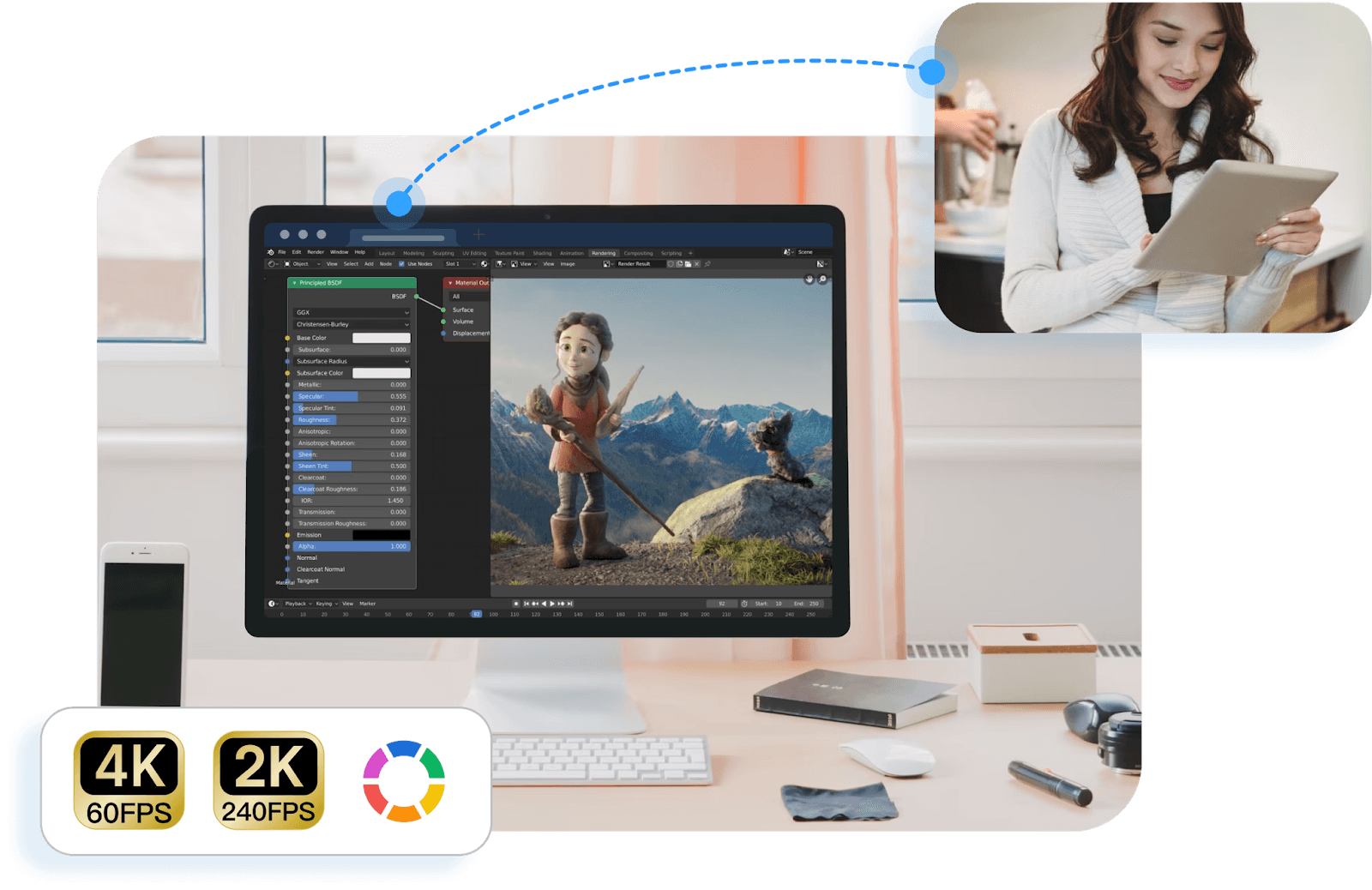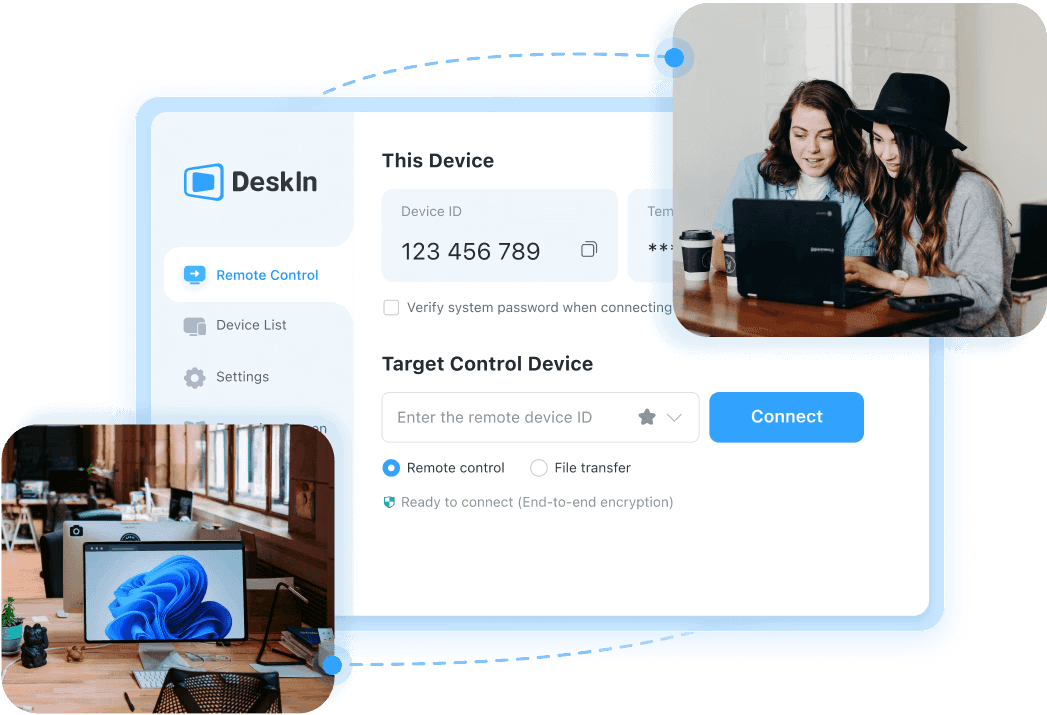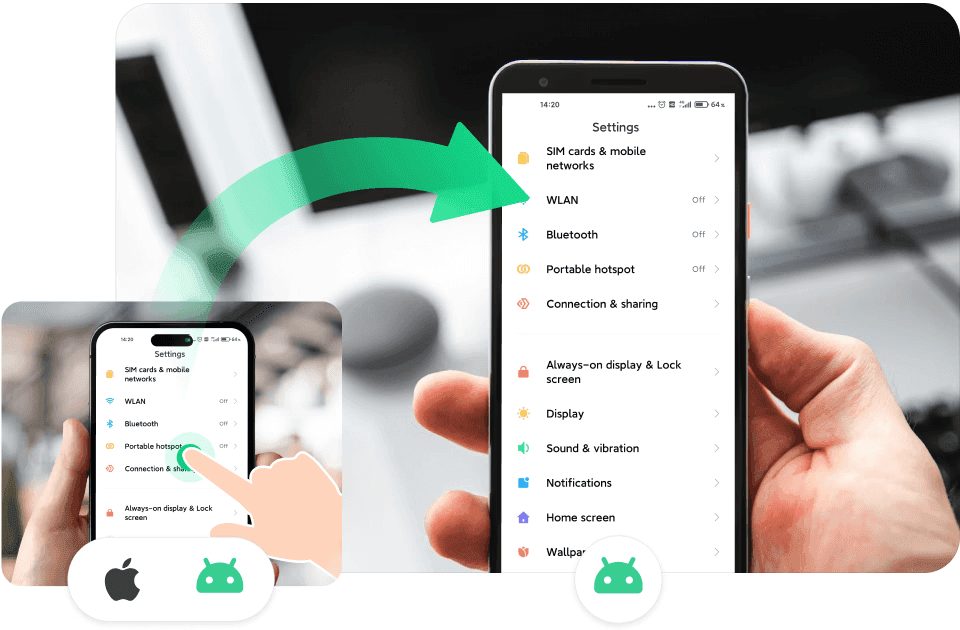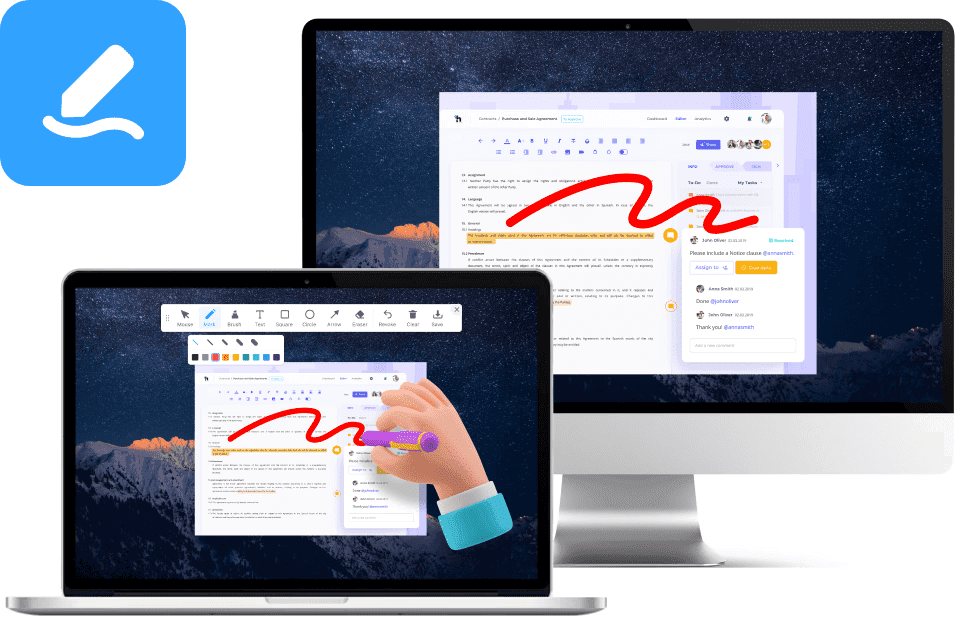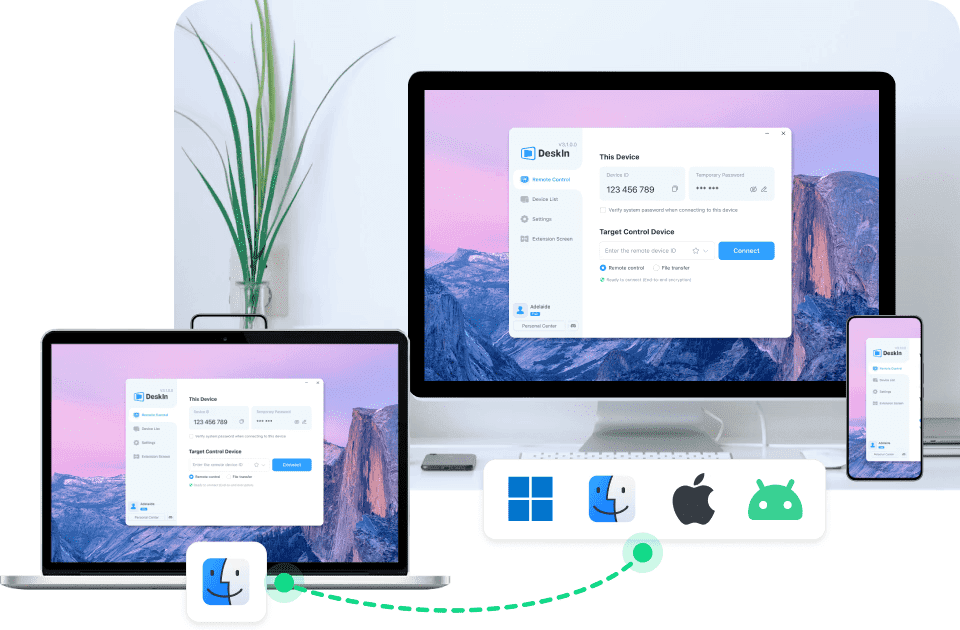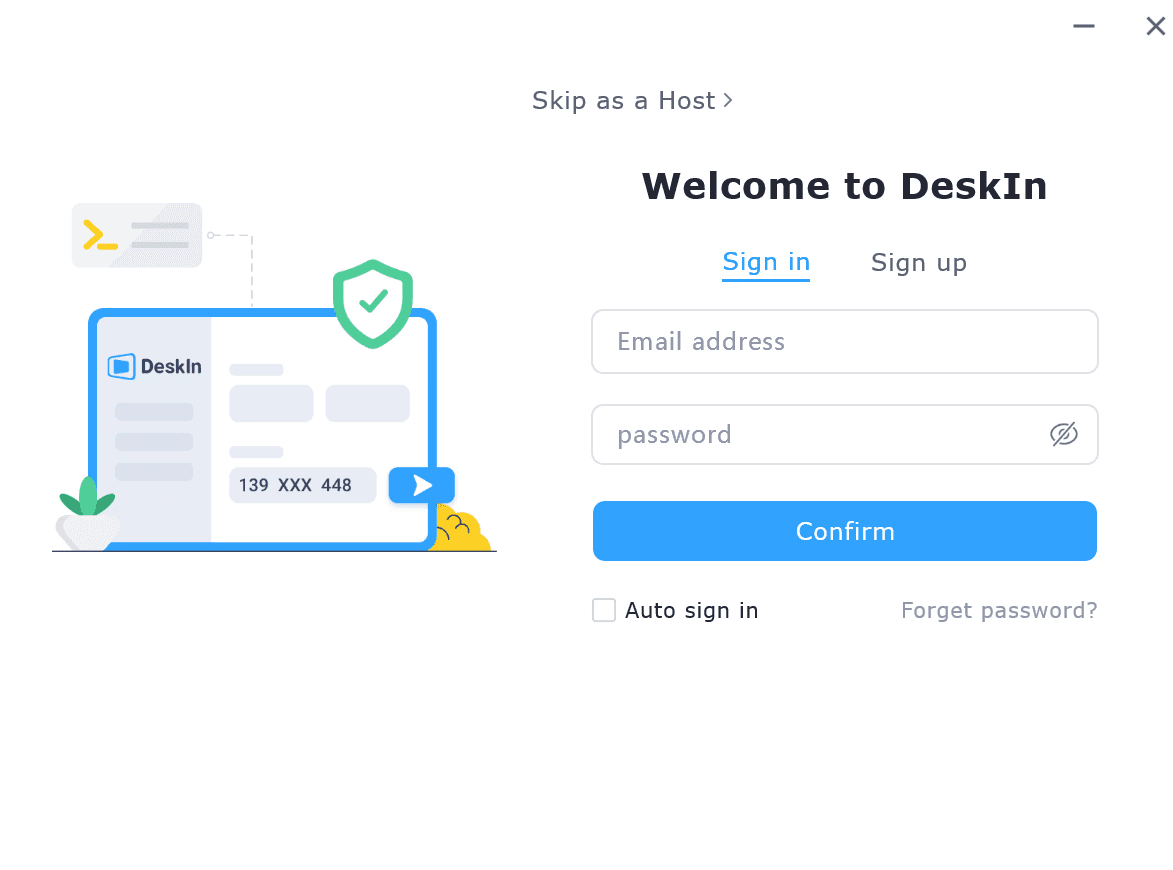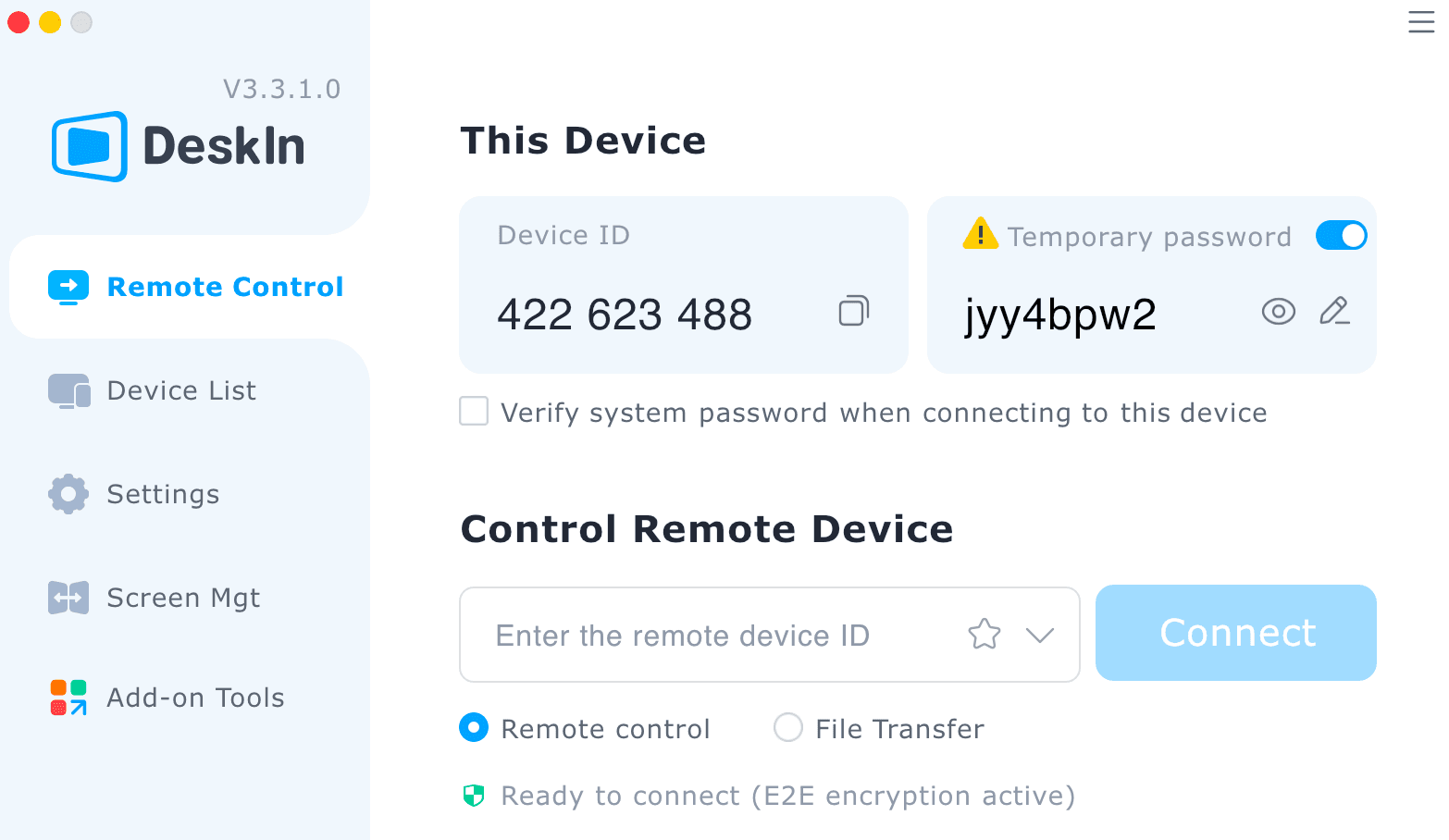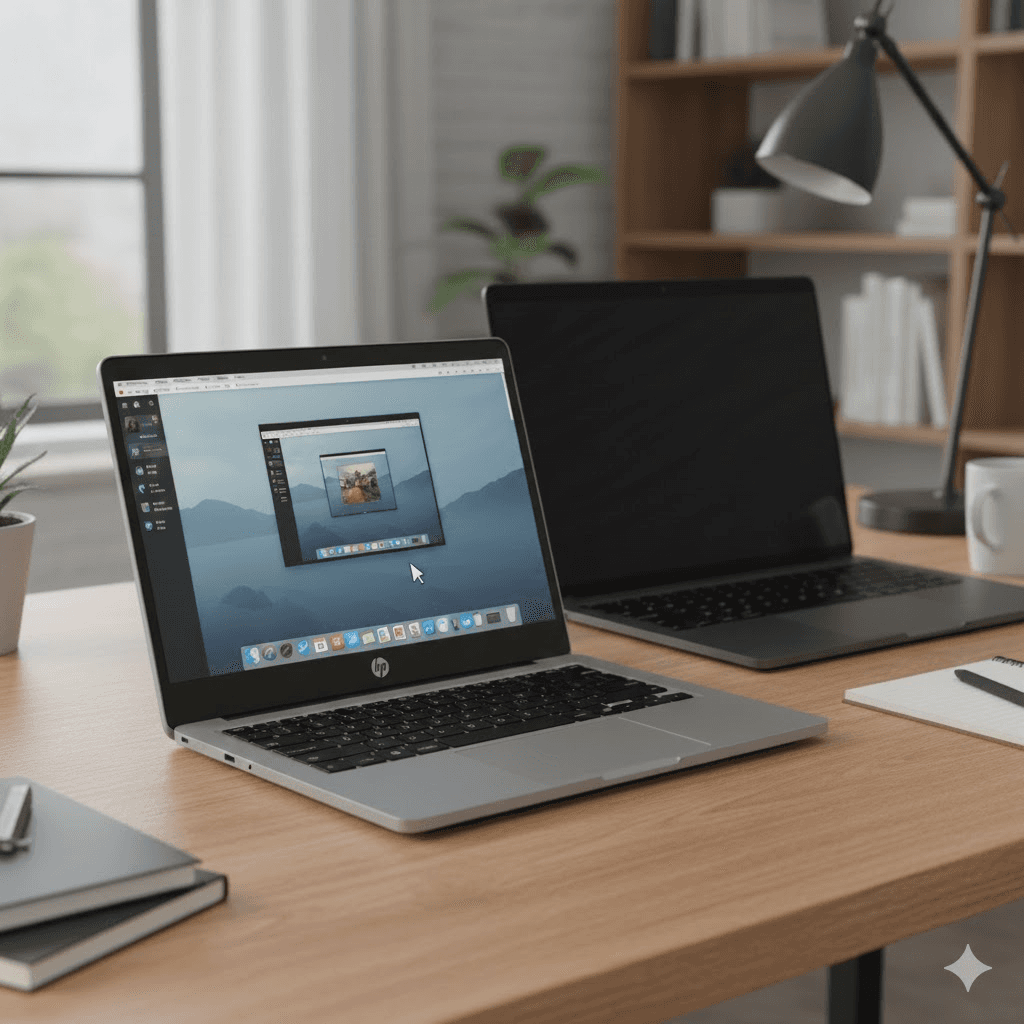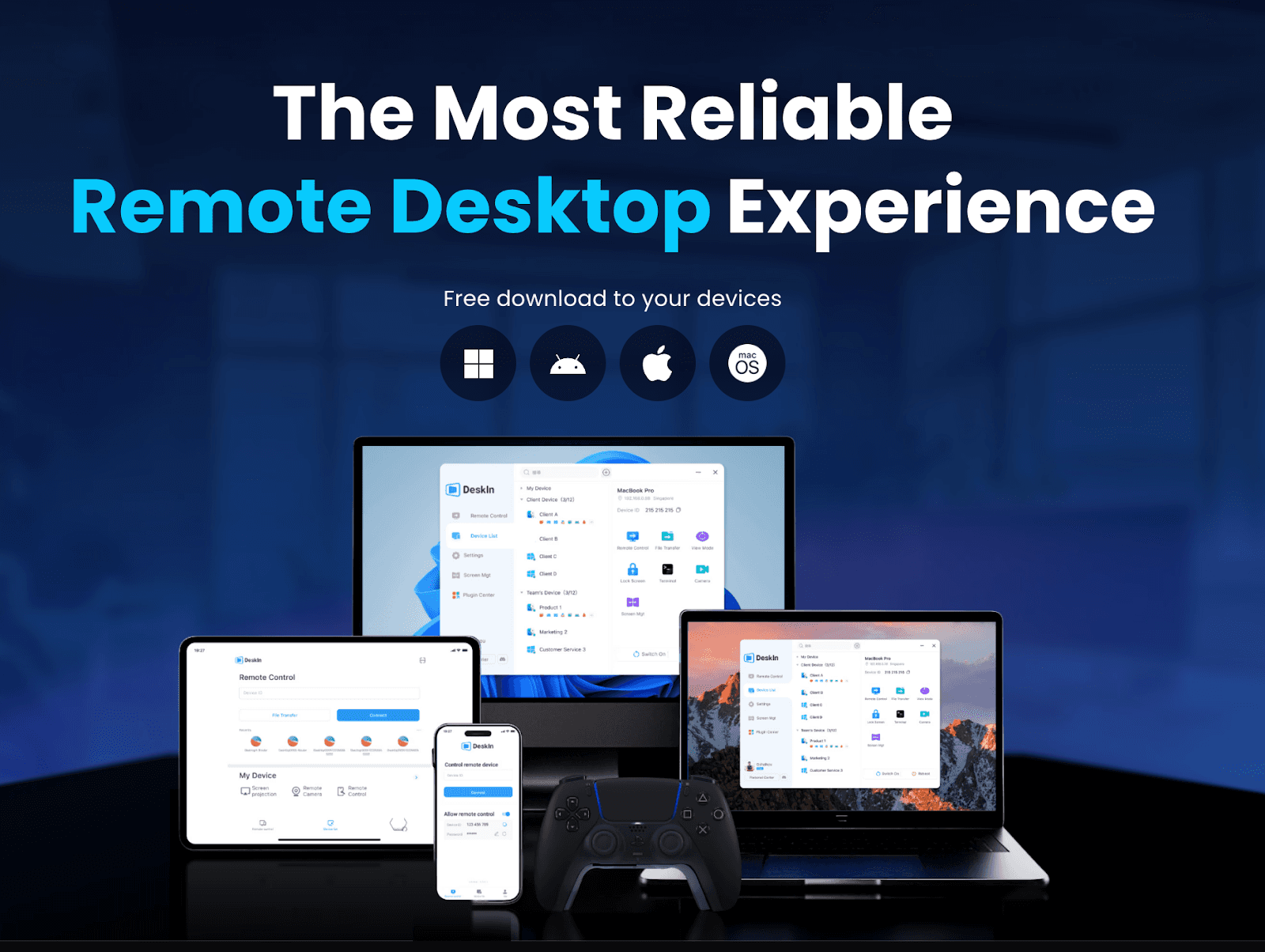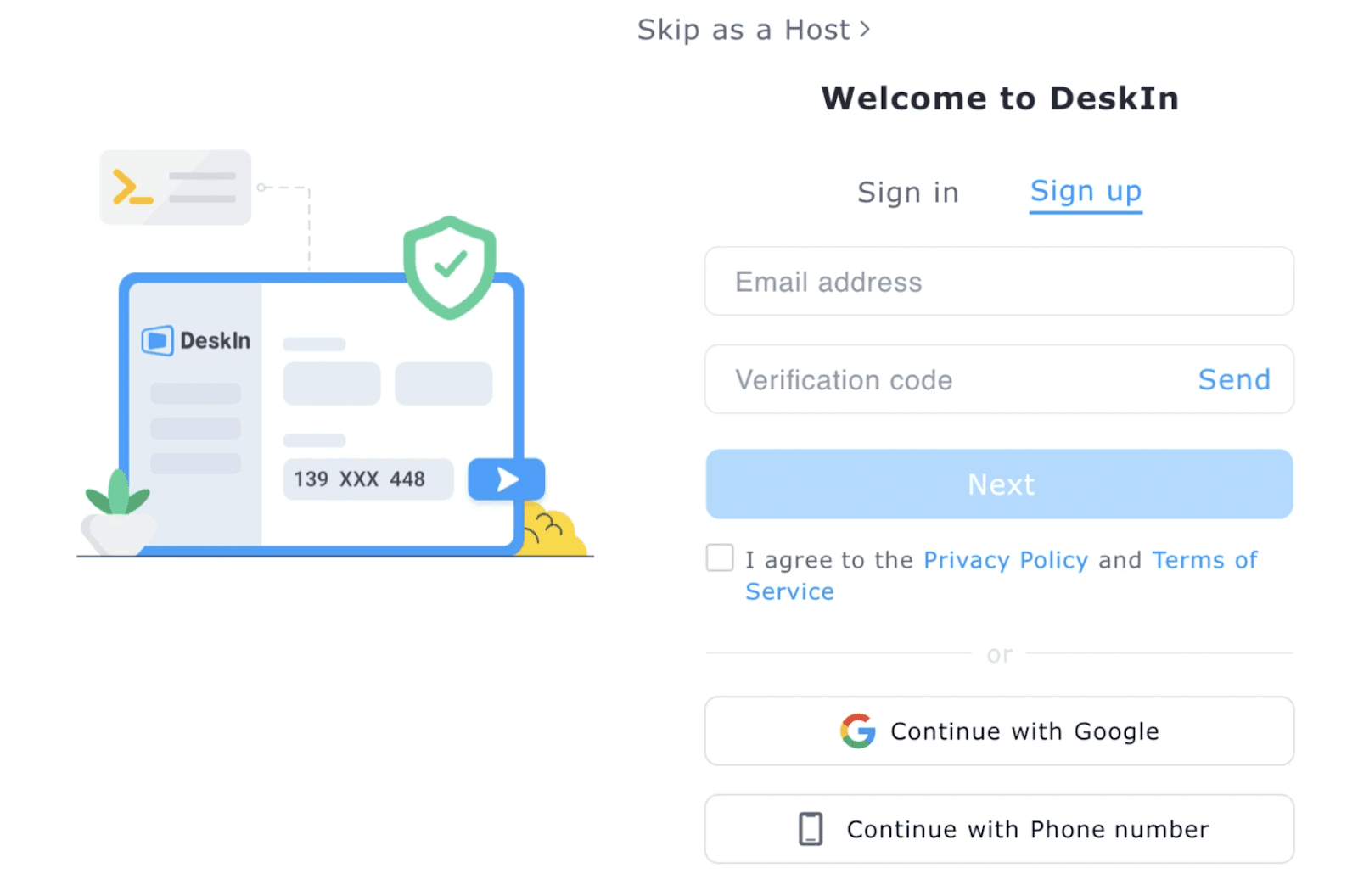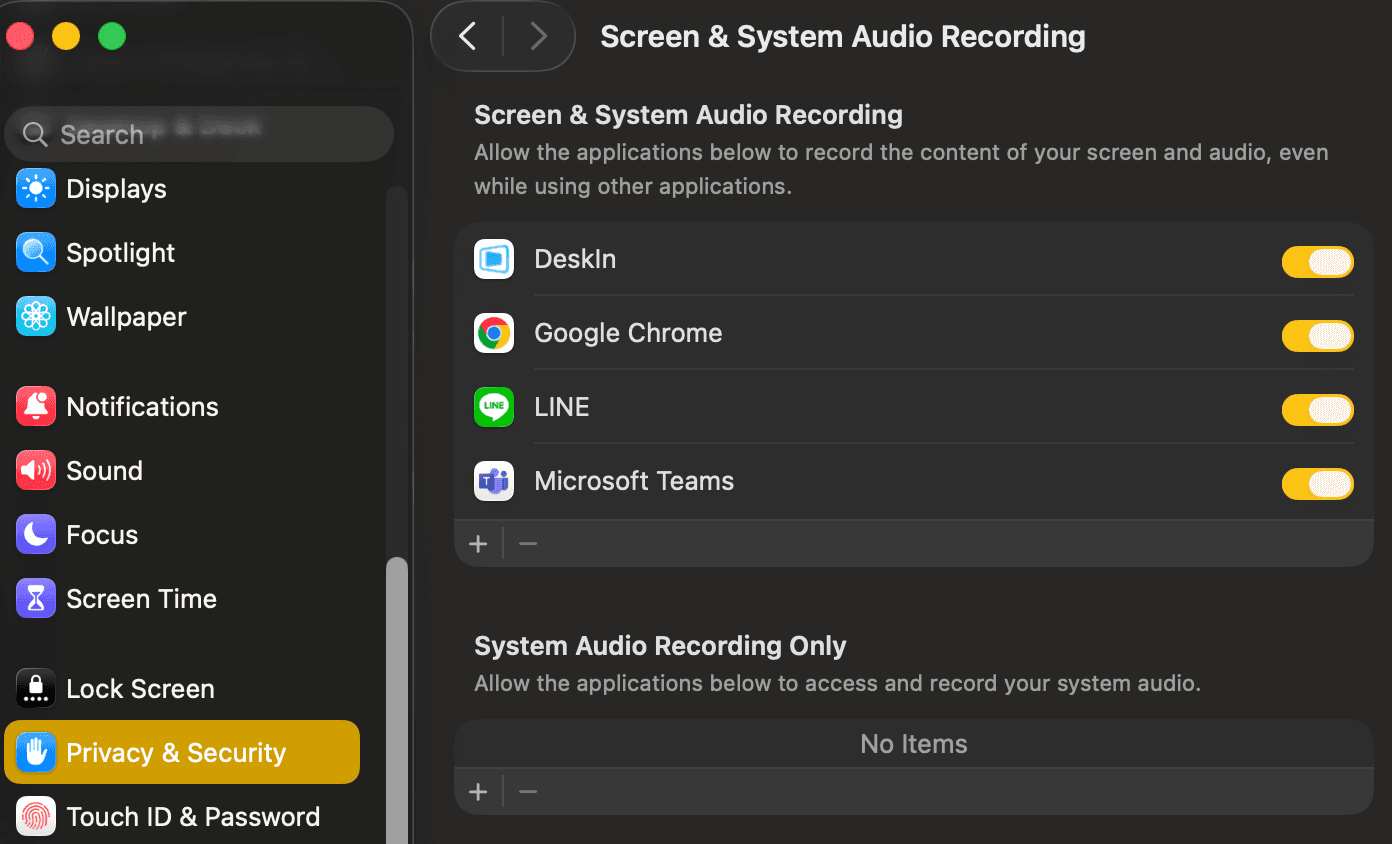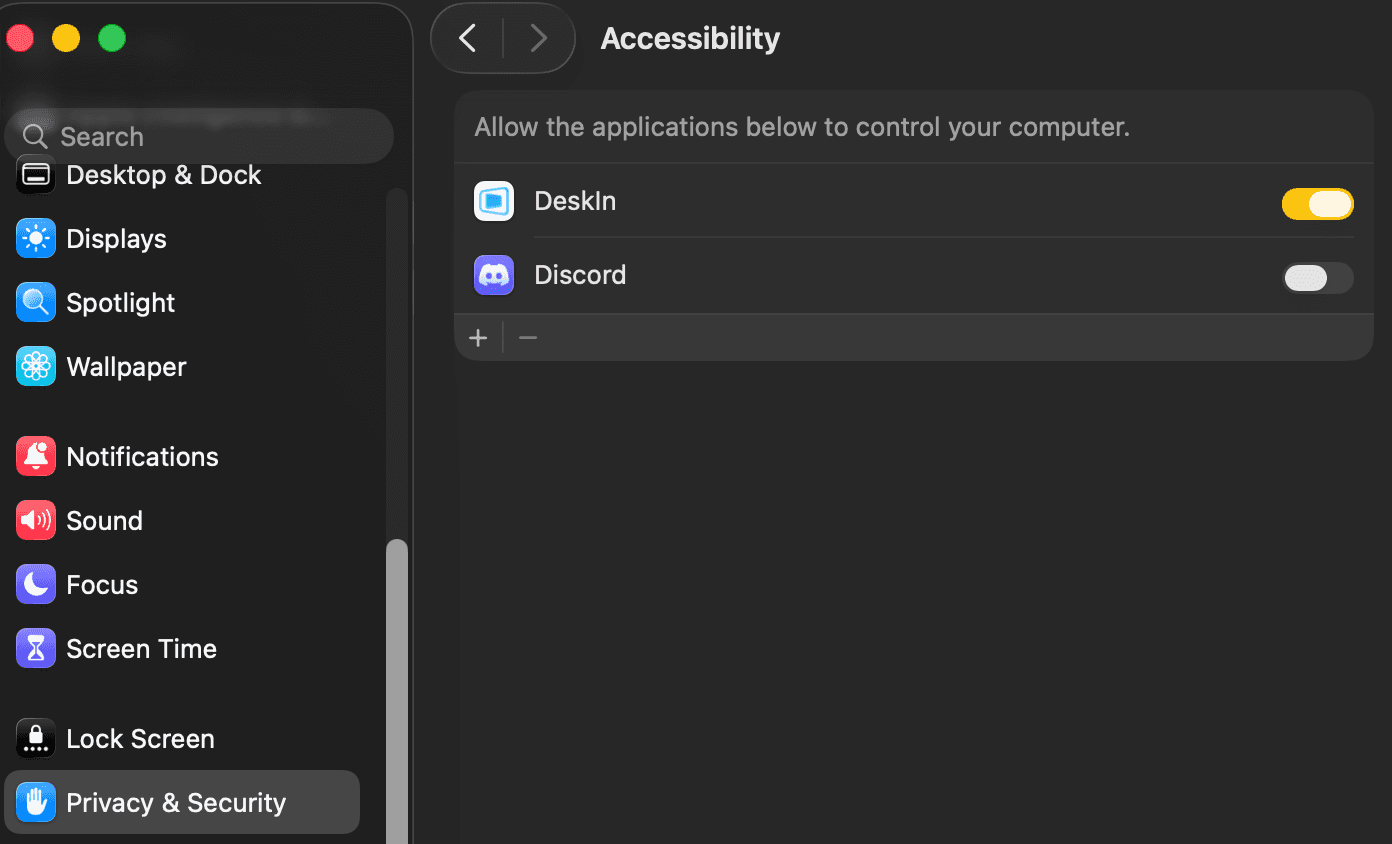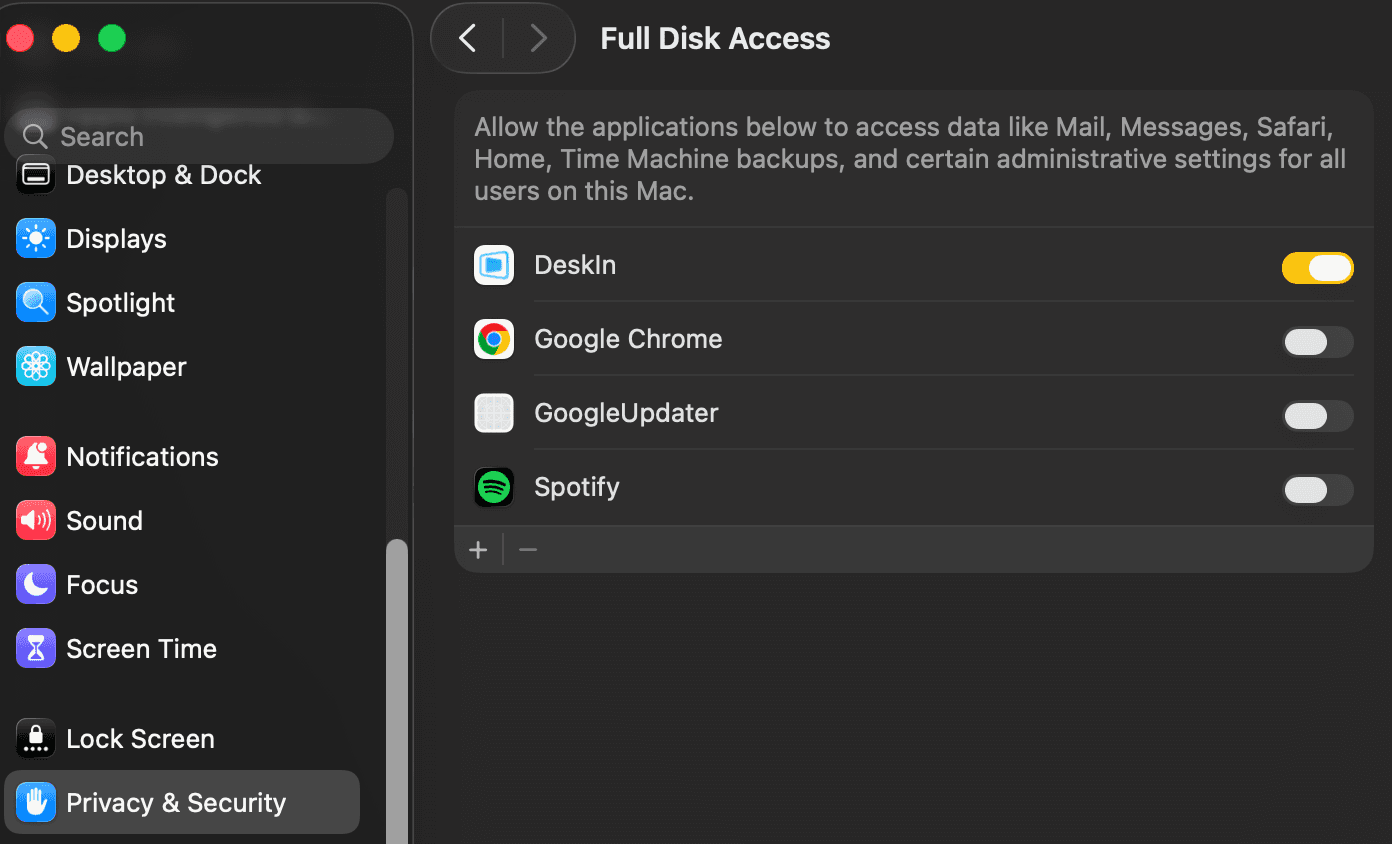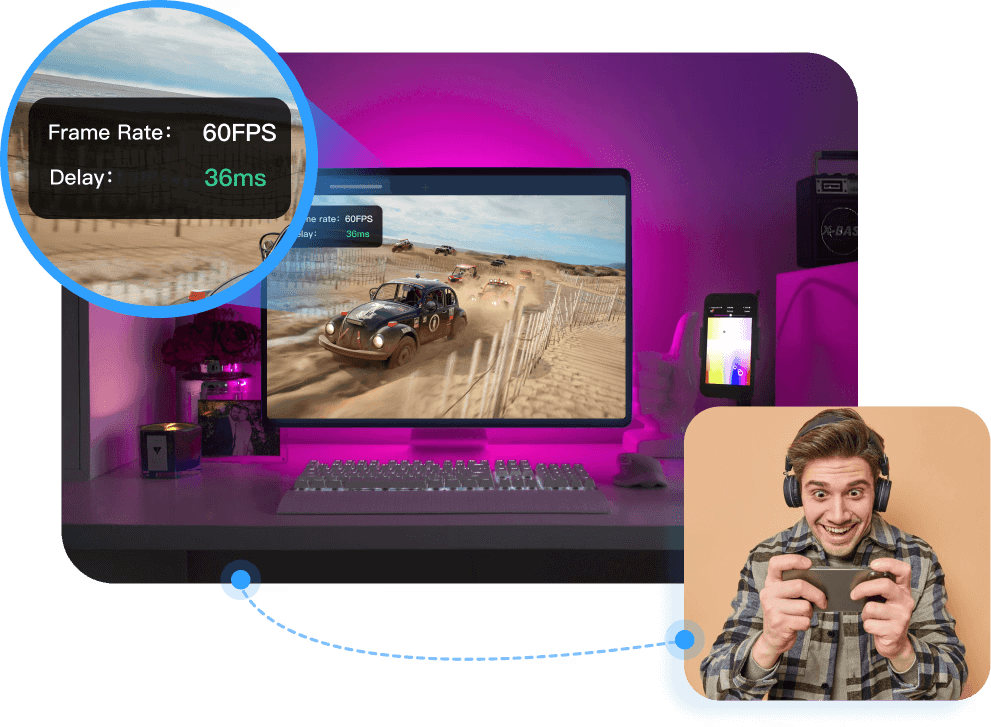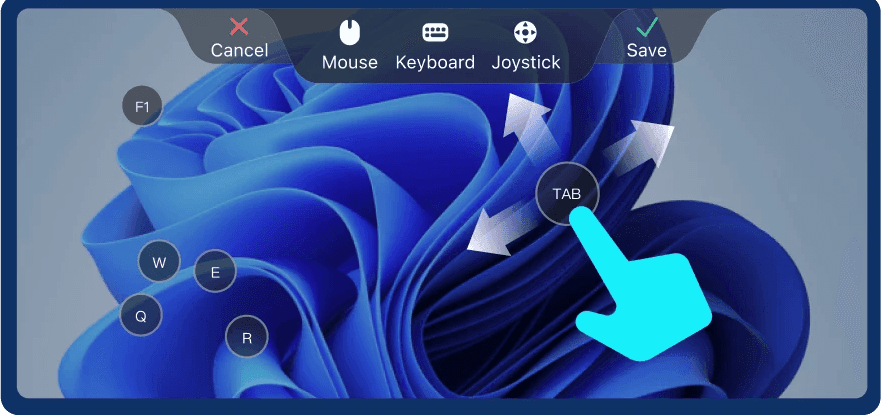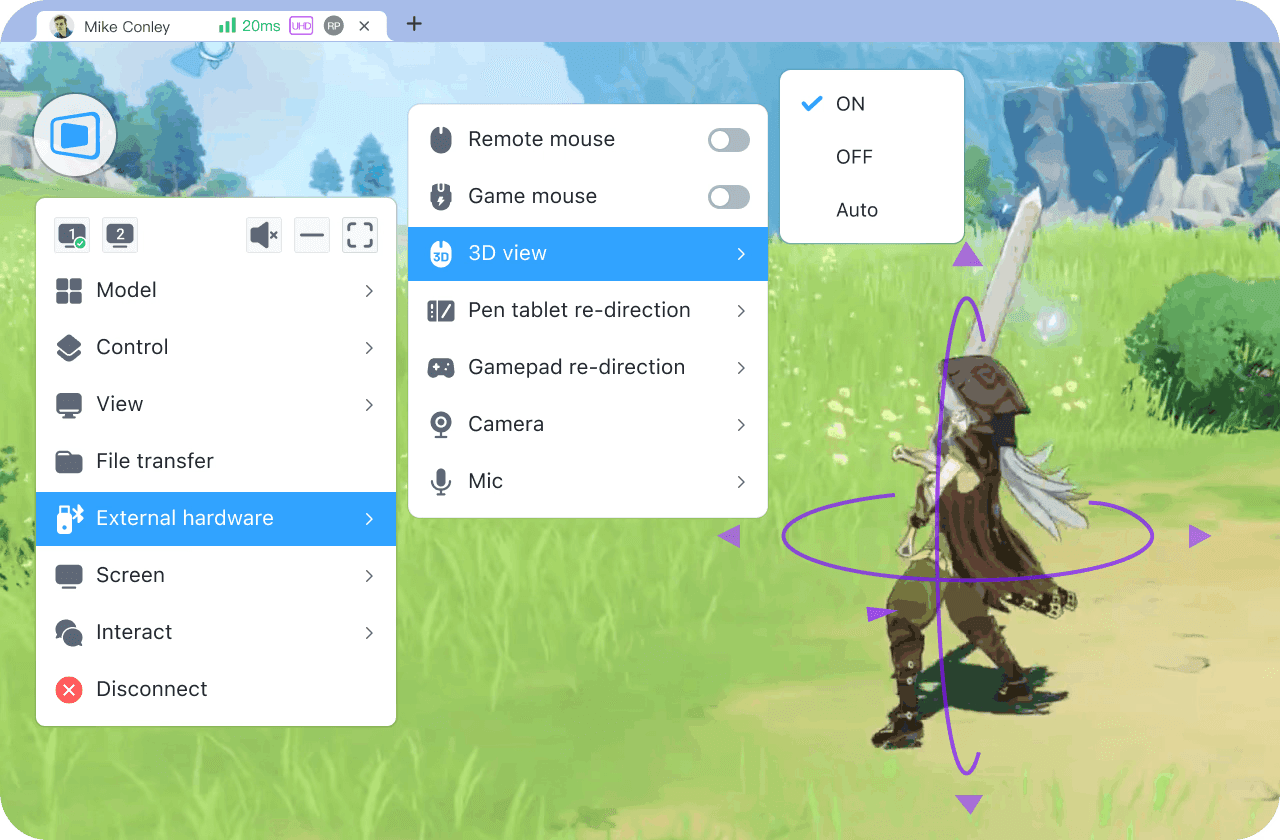Struggling with file transfer over remote desktop between your own devices? You're not alone. We often find Windows Remote Desktop frustratingly slow for large files, limited by transfer caps, and prone to unexpected failures. Ditching email shouldn't mean settling for unreliable tools.
Whether you're sharing work documents or large media files, this guide simplifies the process for you. We'll walk you through Windows' built-in methods and introduce DeskIn, a faster alternative without any files size limitation, and transfer speed fast to 12MB/s.
Related reading:
Use Windows Remote Desktop as File Transfer

Windows RDC is Microsoft's built-in remote access tool that allows users to control another computer's desktop environment over a network. The client is completely free. The RDC client is built into all Windows systems (including Home Edition) and can be used to connect to other devices that support Remote Desktop. However, the host (being controlled) requires a specific version of Windows (Windows Pro, Enterprise, or Education) and does not support Home Edition as a console, requiring a system upgrade or the use of a third-party tool.
Ideal for Pro/Enterprise users needing occasional small transfers, this built-in method maps local drives to the remote session for simple copy-paste transfers. While convenient, it suffers from speed limitations, has no drag-and-drop support, and requires a stable network connection.
In RDC, if the network goes down while transferring files, the transfer stops immediately and cannot be resumed automatically. For over 2GB, and more frequent file transfers, consider the easier alternative method - best remote software, DeskIn.
Who Can Transfer Files via Remote Desktop Connection?
RDC offers seamless integration with Windows, delivering high-quality remote control with minimal latency and robust security through the RDC protocol—all without requiring third-party software. However, its functionality is limited to specific Windows editions: only Pro, Enterprise, or Education editions can act as the host device, leaving Home edition users excluded.
Alongside the device limits, there are notable limitations to consider:
Not Allow for Files over 2 GB and No Batch Transfers: Restrictive for large media files or datasets, and lacks built-in queuing or compression features.
Slow Speed: Transfer speeds rely entirely on network stability — high latency or packet loss can significantly slow down or interrupt file transfers.
No Drag-and-Drop Support: Unlike some third-party remote tools, RDC does not natively support drag-and-drop file transfers; you must manually use the clipboard or mapped drives (the methods are shared below).
Security Constraints: While RDC encrypts sessions, file transfers still depend on proper firewall/NAT configurations to avoid exposure risks.
If none of the above issues affect you, we'll cover the steps next.
1. Sending Files to Remote Computer on Windows
The steps of this method are a bit tricky, and there will be a lot of setup operations, so we suggest you follow our steps step by step.
Step 1. Enable Remote Desktop
Open your Windows Start menu and click to select Settings. In the Settings window, locate and click on the System tab in the left navigation panel. Scroll down the right panel to find and select Remote Desktop.
Toggle the switch to the ON position in the main configuration area. When the security confirmation dialog appears, click Confirm to finalize the activation.

Return to the main Settings interface and select Network & Internet. In the left sidebar, choose Wi-Fi based on your connection type. Click on your active network connection's name to view detailed properties. Scroll through the connection properties until you locate the IPv4 address section.
Carefully note this address, along with the computer's username for remote access. You'll have to enter the username of the PC you're connecting to, so ask for it beforehand.

Step 2. Map Local Drives
In the Windows Search bar, enter "Remote Desktop Connection," then right-click the matching application and select "Run as administrator" to ensure you have the necessary permissions for configuration changes.

Click Show Options in the bottom-left corner of the Remote Desktop Connection window.

Navigate to the Local Resources tab in the top menu bar. Under Local devices and resources, click the More... button to access advanced options.

Step 3. Connect & Transfer
Expand all categories by clicking on the Plus icon and check the boxes for those drives or locations where you have data stored on your device that you want to transfer. Then click the OK button.

Switch to the General tab at the top of the window. Carefully enter the remote PC's username in the designated field, then type its IP address in the Computer field. Once both fields are completed, click the Connect button to initiate the remote session.
After entering the remote PC's password to authenticate, you'll gain access to the remote desktop. Launch File Explorer from the taskbar or Start menu, then navigate to "This PC" in the sidebar. In the main window, locate the 'Redirected drives and folders' section, where your shared local drives will appear. You can now browse these drives and copy files to the remote PC by using standard copy/paste commands.

File transferring interrupted, and have to manually restart?
If you transfer large project folders, you've likely encountered Windows Remote Desktop's frustrating limitations - interrupted transfers requiring manual restart, disorganized file structures, and severe system slowdowns during operations.
This is where DeskIn's Batch Transfer shines as the ultimate solution: Its auto-resume feature eliminates manual reattempts, pristine folder structure preservation maintains your workflow integrity, intelligent bandwidth throttling allows simultaneous work without lag, and real-time progress tracking provides full visibility.
👉 Click here to download DeskIn
2. Sharing Files Remotely on MacOS
After introduction of the method for Windows, we also prepare transfer files over Remote Desktop on Mac steps for Mac users. Apple Remote Desktop is the best way to manage the Mac computers on your network. Distribute software, provide real-time online help to end-users, create detailed software and hardware reports, and automate routine management tasks — all from your own Mac.
STEP 1: Google Apple Remote Desktop, and click in the official website to install it to your computer.
STEP 2: Use "File Search" or "Spotlight Search" to locate the files on the remote computer.

STEP 3: Drag an item from a Finder window to a selected computer in the main window or in a control window.
STEP 4: You might be prompted to confirm the copy operation.
For large files like over 2GB, or rapid transfer speed, you need to consider DeskIn, an easier alternative in this article.
You May Also Need:
[Quick Fixes] Remote Desktop Copy/Paste Not Working: 6 Ways
Enable Clipboard in RDP Options
Launch Remote Desktop Connection > Click "Show Options" > Under Local Resources → Check "Clipboard".

Restart RDP Clipboard Monitor
On the remote PC > Open Task Manager > End "rdpclip.exe" process > Relaunch it via Command Prompt (
rdpclip).Activate Clipboard on Client PC
Open RDP client > Show Options > Local Resources > Ensure Clipboard is enabled under "Local devices and resources".

Allow Clipboard Redirection Remotely
On remote PC > Run
gpedit.msc> Computer Configuration > Administrative Templates > Windows Components > Remote Desktop Services > Remote Desktop Session Host > Device and Resource Redirection > Enable "Do not allow clipboard redirection".Verify Group Policy Settings
On both PCs > Press
Win + R> Typegpedit.msc> Navigate to Local Computer Policy > Computer Configuration > Administrative Templates > System > Group Policy > Confirm Clipboard Redirection is "Enabled".
Update Network Drivers
On client PC > Open Device Manager > Expand Network adapters > Right-click driver > Update driver > Restart both machines.
Note: If copy and paste from remote desktop still fails, check your file size. Transfers over 2GB often break due to RDP limits. Switch to DeskIn for unlimited transfers at 12MB/s speeds — no size restrictions.
Easier Alternative: Transfer Large Files over DeskIn

Struggling with Windows Remote Desktop's limitations? DeskIn offers a better solution - effortlessly moving files of any size between Windows PCs with blazing speed and military-grade security. Ideal for professionals needing unlimited, cross-platform file transfers, DeskIn bypasses Windows' 2GB limit with lightning-fast speeds and transfers any files immediately.
Its optimized protocols and end-to-end encryption make it perfect for media files, backups, and team collaborations. You'll never have to worry about file leaks again. For heavy data transfers, this outperforms standard Remote Desktop with seamless performance.
DeskIn: Transfer Multi-GB Files in Minutes
Fast File Transfers: Send files in bulk faster than regular remote desktop tools, even on slow internet connections. Spend less time waiting and more time being productive when you need to send important work files quickly.
No Size Limits: Send huge files like videos, backups, or game files - no more 2GB restrictions! You can simultaneously transfer those large project files or personal videos that Windows Remote Desktop can't handle.
Works With All File Types: Transfer photos, documents, music, videos, and any other files without problems. No more worrying if your files will work - everything transfers perfectly.
Super Secure: Your files are protected with bank-level encryption during transfers. Send confidential work documents or personal photos with complete peace of mind. With this level of safety, you could remote access desktop 100% securely as well.
Easy Two-Way Sharing: Simply drag and drop files between your computers - no complicated setup is needed. Unlike Windows RDC, which requires complex drive mapping, DeskIn lets you transfer files as easily as moving files between folders on your own computer.
3 Steps to Transfer Large Files Over DeskIn with Ease
Now, let me show you how to transfer files in just 3 simple steps with DeskIn.
Step 1. Download DeskIn
Visit DeskIn and install it on both devices. Create and log in to your account on both devices. DeskIn offers a free trial, and you can start using it immediately.
👉 Click here to download DeskIn

Step 2. Choose Remote Windows to Connect
Navigate to the Device List, find the target PC, click the File Transfer button, and enter the Password (in the Remote Control).
Note: If your two devices are not logged into the same account, you will also need to enter the device code.

Step 3. Send Files Instantly
Simply drag and drop files between your computers. DeskIn will transfer files at 12MB/S. At the bottom of the page, you can see the progress of the file transfer. After a successful transfer, you can see the transferred files in your folder.
Note: DeskIn supports cross-system file transfers of unlimited size, type, and number.

More Readings:
FAQs about Transfer Files Over Remote Desktop
How to Automate or Schedule File Transfers via Remote Desktop?
On Linux/macOS, automate transfers using scp commands "combined with cron jobs". Schedule scripts to copy files between systems at set times (e.g., scp -r /local/folder user@remote:/path).
For Windows, PowerShell scripts with Task Scheduler offer similar automation. (Note: RDP size/speed limits apply.)
Which Application is Used for Remote Control, Desktop Sharing, and File Transfer?
Use DeskIn to unlock unlimited file transfers (no size caps) at blazing 12MB/s speeds while enjoying ultra-low latency (≤40ms), 4K clarity, and seamless screen sharing for flawless remote control & collaboration. Elevate your desktop experience now!
Conclusion
While Windows Remote Desktop works for small, infrequent transfers, its 2GB cap and OS restrictions limit its practicality. For seamless, high-speed file transfers using remote desktop tasks, DeskIn removes these barriers with unlimited sizes, robust security, and intuitive controls. Whether you're a remote worker or an IT professional, DeskIn ensures your files move swiftly and securely, with no compromises.
Struggling with file transfer over remote desktop between your own devices? You're not alone. We often find Windows Remote Desktop frustratingly slow for large files, limited by transfer caps, and prone to unexpected failures. Ditching email shouldn't mean settling for unreliable tools.
Whether you're sharing work documents or large media files, this guide simplifies the process for you. We'll walk you through Windows' built-in methods and introduce DeskIn, a faster alternative without any files size limitation, and transfer speed fast to 12MB/s.
Related reading:
Use Windows Remote Desktop as File Transfer

Windows RDC is Microsoft's built-in remote access tool that allows users to control another computer's desktop environment over a network. The client is completely free. The RDC client is built into all Windows systems (including Home Edition) and can be used to connect to other devices that support Remote Desktop. However, the host (being controlled) requires a specific version of Windows (Windows Pro, Enterprise, or Education) and does not support Home Edition as a console, requiring a system upgrade or the use of a third-party tool.
Ideal for Pro/Enterprise users needing occasional small transfers, this built-in method maps local drives to the remote session for simple copy-paste transfers. While convenient, it suffers from speed limitations, has no drag-and-drop support, and requires a stable network connection.
In RDC, if the network goes down while transferring files, the transfer stops immediately and cannot be resumed automatically. For over 2GB, and more frequent file transfers, consider the easier alternative method - best remote software, DeskIn.
Who Can Transfer Files via Remote Desktop Connection?
RDC offers seamless integration with Windows, delivering high-quality remote control with minimal latency and robust security through the RDC protocol—all without requiring third-party software. However, its functionality is limited to specific Windows editions: only Pro, Enterprise, or Education editions can act as the host device, leaving Home edition users excluded.
Alongside the device limits, there are notable limitations to consider:
Not Allow for Files over 2 GB and No Batch Transfers: Restrictive for large media files or datasets, and lacks built-in queuing or compression features.
Slow Speed: Transfer speeds rely entirely on network stability — high latency or packet loss can significantly slow down or interrupt file transfers.
No Drag-and-Drop Support: Unlike some third-party remote tools, RDC does not natively support drag-and-drop file transfers; you must manually use the clipboard or mapped drives (the methods are shared below).
Security Constraints: While RDC encrypts sessions, file transfers still depend on proper firewall/NAT configurations to avoid exposure risks.
If none of the above issues affect you, we'll cover the steps next.
1. Sending Files to Remote Computer on Windows
The steps of this method are a bit tricky, and there will be a lot of setup operations, so we suggest you follow our steps step by step.
Step 1. Enable Remote Desktop
Open your Windows Start menu and click to select Settings. In the Settings window, locate and click on the System tab in the left navigation panel. Scroll down the right panel to find and select Remote Desktop.
Toggle the switch to the ON position in the main configuration area. When the security confirmation dialog appears, click Confirm to finalize the activation.

Return to the main Settings interface and select Network & Internet. In the left sidebar, choose Wi-Fi based on your connection type. Click on your active network connection's name to view detailed properties. Scroll through the connection properties until you locate the IPv4 address section.
Carefully note this address, along with the computer's username for remote access. You'll have to enter the username of the PC you're connecting to, so ask for it beforehand.

Step 2. Map Local Drives
In the Windows Search bar, enter "Remote Desktop Connection," then right-click the matching application and select "Run as administrator" to ensure you have the necessary permissions for configuration changes.

Click Show Options in the bottom-left corner of the Remote Desktop Connection window.

Navigate to the Local Resources tab in the top menu bar. Under Local devices and resources, click the More... button to access advanced options.

Step 3. Connect & Transfer
Expand all categories by clicking on the Plus icon and check the boxes for those drives or locations where you have data stored on your device that you want to transfer. Then click the OK button.

Switch to the General tab at the top of the window. Carefully enter the remote PC's username in the designated field, then type its IP address in the Computer field. Once both fields are completed, click the Connect button to initiate the remote session.
After entering the remote PC's password to authenticate, you'll gain access to the remote desktop. Launch File Explorer from the taskbar or Start menu, then navigate to "This PC" in the sidebar. In the main window, locate the 'Redirected drives and folders' section, where your shared local drives will appear. You can now browse these drives and copy files to the remote PC by using standard copy/paste commands.

File transferring interrupted, and have to manually restart?
If you transfer large project folders, you've likely encountered Windows Remote Desktop's frustrating limitations - interrupted transfers requiring manual restart, disorganized file structures, and severe system slowdowns during operations.
This is where DeskIn's Batch Transfer shines as the ultimate solution: Its auto-resume feature eliminates manual reattempts, pristine folder structure preservation maintains your workflow integrity, intelligent bandwidth throttling allows simultaneous work without lag, and real-time progress tracking provides full visibility.
👉 Click here to download DeskIn
2. Sharing Files Remotely on MacOS
After introduction of the method for Windows, we also prepare transfer files over Remote Desktop on Mac steps for Mac users. Apple Remote Desktop is the best way to manage the Mac computers on your network. Distribute software, provide real-time online help to end-users, create detailed software and hardware reports, and automate routine management tasks — all from your own Mac.
STEP 1: Google Apple Remote Desktop, and click in the official website to install it to your computer.
STEP 2: Use "File Search" or "Spotlight Search" to locate the files on the remote computer.

STEP 3: Drag an item from a Finder window to a selected computer in the main window or in a control window.
STEP 4: You might be prompted to confirm the copy operation.
For large files like over 2GB, or rapid transfer speed, you need to consider DeskIn, an easier alternative in this article.
You May Also Need:
[Quick Fixes] Remote Desktop Copy/Paste Not Working: 6 Ways
Enable Clipboard in RDP Options
Launch Remote Desktop Connection > Click "Show Options" > Under Local Resources → Check "Clipboard".

Restart RDP Clipboard Monitor
On the remote PC > Open Task Manager > End "rdpclip.exe" process > Relaunch it via Command Prompt (
rdpclip).Activate Clipboard on Client PC
Open RDP client > Show Options > Local Resources > Ensure Clipboard is enabled under "Local devices and resources".

Allow Clipboard Redirection Remotely
On remote PC > Run
gpedit.msc> Computer Configuration > Administrative Templates > Windows Components > Remote Desktop Services > Remote Desktop Session Host > Device and Resource Redirection > Enable "Do not allow clipboard redirection".Verify Group Policy Settings
On both PCs > Press
Win + R> Typegpedit.msc> Navigate to Local Computer Policy > Computer Configuration > Administrative Templates > System > Group Policy > Confirm Clipboard Redirection is "Enabled".
Update Network Drivers
On client PC > Open Device Manager > Expand Network adapters > Right-click driver > Update driver > Restart both machines.
Note: If copy and paste from remote desktop still fails, check your file size. Transfers over 2GB often break due to RDP limits. Switch to DeskIn for unlimited transfers at 12MB/s speeds — no size restrictions.
Easier Alternative: Transfer Large Files over DeskIn

Struggling with Windows Remote Desktop's limitations? DeskIn offers a better solution - effortlessly moving files of any size between Windows PCs with blazing speed and military-grade security. Ideal for professionals needing unlimited, cross-platform file transfers, DeskIn bypasses Windows' 2GB limit with lightning-fast speeds and transfers any files immediately.
Its optimized protocols and end-to-end encryption make it perfect for media files, backups, and team collaborations. You'll never have to worry about file leaks again. For heavy data transfers, this outperforms standard Remote Desktop with seamless performance.
DeskIn: Transfer Multi-GB Files in Minutes
Fast File Transfers: Send files in bulk faster than regular remote desktop tools, even on slow internet connections. Spend less time waiting and more time being productive when you need to send important work files quickly.
No Size Limits: Send huge files like videos, backups, or game files - no more 2GB restrictions! You can simultaneously transfer those large project files or personal videos that Windows Remote Desktop can't handle.
Works With All File Types: Transfer photos, documents, music, videos, and any other files without problems. No more worrying if your files will work - everything transfers perfectly.
Super Secure: Your files are protected with bank-level encryption during transfers. Send confidential work documents or personal photos with complete peace of mind. With this level of safety, you could remote access desktop 100% securely as well.
Easy Two-Way Sharing: Simply drag and drop files between your computers - no complicated setup is needed. Unlike Windows RDC, which requires complex drive mapping, DeskIn lets you transfer files as easily as moving files between folders on your own computer.
3 Steps to Transfer Large Files Over DeskIn with Ease
Now, let me show you how to transfer files in just 3 simple steps with DeskIn.
Step 1. Download DeskIn
Visit DeskIn and install it on both devices. Create and log in to your account on both devices. DeskIn offers a free trial, and you can start using it immediately.
👉 Click here to download DeskIn

Step 2. Choose Remote Windows to Connect
Navigate to the Device List, find the target PC, click the File Transfer button, and enter the Password (in the Remote Control).
Note: If your two devices are not logged into the same account, you will also need to enter the device code.

Step 3. Send Files Instantly
Simply drag and drop files between your computers. DeskIn will transfer files at 12MB/S. At the bottom of the page, you can see the progress of the file transfer. After a successful transfer, you can see the transferred files in your folder.
Note: DeskIn supports cross-system file transfers of unlimited size, type, and number.

More Readings:
FAQs about Transfer Files Over Remote Desktop
How to Automate or Schedule File Transfers via Remote Desktop?
On Linux/macOS, automate transfers using scp commands "combined with cron jobs". Schedule scripts to copy files between systems at set times (e.g., scp -r /local/folder user@remote:/path).
For Windows, PowerShell scripts with Task Scheduler offer similar automation. (Note: RDP size/speed limits apply.)
Which Application is Used for Remote Control, Desktop Sharing, and File Transfer?
Use DeskIn to unlock unlimited file transfers (no size caps) at blazing 12MB/s speeds while enjoying ultra-low latency (≤40ms), 4K clarity, and seamless screen sharing for flawless remote control & collaboration. Elevate your desktop experience now!
Conclusion
While Windows Remote Desktop works for small, infrequent transfers, its 2GB cap and OS restrictions limit its practicality. For seamless, high-speed file transfers using remote desktop tasks, DeskIn removes these barriers with unlimited sizes, robust security, and intuitive controls. Whether you're a remote worker or an IT professional, DeskIn ensures your files move swiftly and securely, with no compromises.






